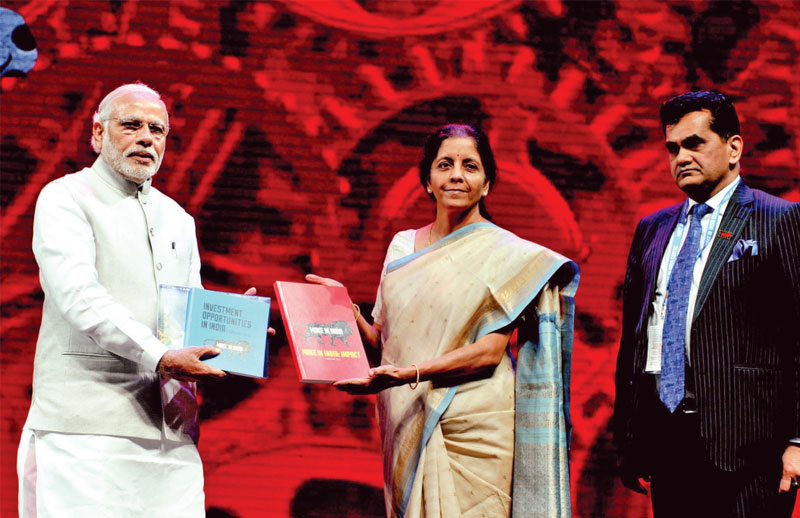A blueprint for making ‘Make-in-India’ in defence work
 Cdr S. Shrikumar (retd)
Cdr S. Shrikumar (retd)
Towards the end of April 2022, in an uncharacteristically bold move, the government of India introduced an amendment to the Defence Acquisition Procedure-2020 (DAP-2020). The amendment stipulated that, ‘Going forward, all modernisation requirements of the defence services and the Indian Coast Guard are to be indigenously sourced irrespective of the nature of the procurement.’
Accompanying this amendment, were other enabling amendments related to earnest money deposit (EMD) and performance bank guarantees (PBG). Collectively, the amendments were aimed at accelerating Make in India and enhancing the ‘ease’ of doing business in India—especially for the domestic manufacture of defence equipment.
Earlier government attempts through incremental measures such as enhanced limits for FDI in the defence sector, Make-I/II/III schemes, strategic partnerships, defence offsets, negative lists, etc., had not delivered the hoped-for impact—end India’s reliance on imports for its defence needs. Sadly however, even the latest amendments to the DAP have not helped India make any meaningful progress in its self-reliance goals.
As per the Stockholm International Peace Research Institute’s (SIPRI) yearbook-2024, in the period from 2019-2023, India was the world’s largest importer of major arms accounting for 9.8 per cent of the global share. Clearly, a wide gap continues to exist between India’s self-reliance ambition, as signalled by periodic changes in its defence acquisition policies, and the capabilities available within its defence industrial complex to deliver on this ambition.
Import Dependence
India has among the largest defence industrial complexes in the developing world, comprising 41 ordnance factories (OFs) (reorganised in 2021 into seven different government companies) and nine defence public sector undertakings (DPSUs) under the administrative control of the ministry of defence (MoD). Further, there are over 150 large, medium and small-sized defence companies in the private sector. There are also around 50 dedicated research laboratories and establishments forming the Defence Research and Development Organisation (DRDO), the research and development (R&D) wing of the MoD.
Despite boasting of this infrastructure, India continues to be overwhelmingly dependent on arms import to meet its defence needs. The target of 70 per cent self-reliance in defence needs, set for 2005, is yet to be achieved. Currently, India’s self-reliance in arms stands at around 30-40 per cent. China, which not so long ago was the world’s largest arms importer, has graduated to being the world’s fourth-largest arms exporter—behind only the US, France and Russia—with 5.8 per cent of the global share.
Even in the equipment being designed and manufactured in India, the indigenous content is extremely low. The comptroller and auditor general (CAG) of India, in a 2011 report submitted to Parliament, had commented adversely on the import dependency of HAL (Hindustan Aeronautics Limited). The report highlighted that for raw materials and bought-out items used in the production of the Advanced Light Helicopter (ALH)—touted as being indigenously designed and developed—there was a 90 per cent import dependency even though the ALH had, by then, already been in production for over a decade.
Taking Stock
Self-reliance in defence can only be attained through the acquisition of indigenous capability in the design, development (D&D) and manufacture of defence equipment. This requires a multi-fold increase in investment in defence R&D (both in the government and private sector), increasing researcher density, shifting the focus from applied research to basic research, and most importantly, creating a wider defence manufacturing eco-system that includes the public/ private sector defence firms and the micro, small, medium enterprises (MSMEs). No nation has ever achieved self-reliance in defence without sustained investments in indigenous D&D capability.
The liberalised FDI norms have failed to attract any significant FDI to spur local D&D of defence equipment. The reasons for the low FDI inflow are well known and are largely due to:
- Apprehensions around guaranteed and sustained support to make the investments/ joint ventures financially viable.
- The onerous and somewhat ambiguous policy provisions.
- Fear of award of contracts by the government through nomination to the DPSUs/OFs owing to political compulsions.
The defence offsets policy, despite multiple revisions, has delivered limited impact in furthering self-reliance in defence. The policy’s impact is limited to the enablement of export of civilian aerospace parts and components. The reasons for the ineffectiveness of the offsets policy include:
- Policy inadequacies when compared to international offset best practices.
- Extremely moderate thresholds and percentages for offsets.
- Non-insistence on the principle of local value addition in both manufacturing and service offset contracts.
- Non-application of the principle of additionality and causality.
- Total freedom to the foreign vendors to choose areas of offsets.
- Lax monitoring of offset contract adherence and progress.
When the three negative lists for the procurement of defence equipment were promulgated, it was highlighted that the lists had been prepared ‘after several rounds of consultations with all stakeholders, including Army, Air Force, Navy, DRDO, Defence Public Sector Undertakings (DPSUs), Ordnance Factory Board (OFB) and (the) private industry to assess current and future capabilities of the Indian industry for manufacturing various ammunition/ weapons/ platforms/ equipment in India.’
Implicit in the promulgation of the negative lists was the understanding that indigenously designed, developed and manufactured versions of the items in the list (with indigenous content of at least 50 per cent) would be available by the date that the embargo on their import comes into effect. Judging by just a few of the items (APFSDS, INS for ship applications, conventional submarines, UUVs, buoyancy gliders, etc.) in the three negative lists, availability of indigenous equivalents of many of the items on the lists, before the embargo comes into effect, is improbable. Expectedly, for several critical equipment, essential for maintaining combat readiness, the MoD has had to waive the restrictions either on import or the extent of indigenous content in the equivalent Indian equipment.

Barriers to Making in India
Investments in defence technologies are capital-intensive and provide returns only in the long term. Investments in defence technologies are viable only when exports, which provide economies of scale, are pursued whilst simultaneously fulfilling domestic demand. However, it is unlikely that India will, at least in the near term, be able to export any sizeable quantities of indigenously developed and manufactured defence equipment. The reasons include:
- The arms market is ultra-competitive with established global players offering equipment that has been proven in combat by militaries across the world.
- The mature, and the new-entrant arms exporters (China, South Korea), amongst themselves, currently receive the custom of almost all the arms-importing nations of the world and are strongly entrenched with their core customers.
- Even in the case of mature and established global firms, their domestic demand does not provide them with economies of scale. The established players are also dependent on exports for maintaining a sustainable business. The existing mature suppliers, well-entrenched with their customers, will not cede space to new entrants easily.
- Globally, India does not enjoy a favourable reputation for technology R&D, high-quality engineering, modern manufacturing or product reliability.
- Equipment produced in India, even under Transfer of Technology/ licensing arrangements, has not been able to inspire confidence, amongst even domestic buyers, since they have been plagued with several quality issues. Indigenously developed and manufactured equipment like the Arjun tanks, the light combat aircraft and bullet-proof jackets often cannot be used because of performance issues.
- Customers rely on cues that reveal the qualities of the product. The most important cue in arms purchase is the proven record of the product’s use by the exporting country’s armed forces. India currently does not have any weapon platform or weapon system that is totally indigenous in design, built using indigenous parts, electronics, sub-systems, etc. that have been proven in operations with India’s armed forces.
- The negative country-of-origin perceptions that accompany Indian-made products will also take time to reverse and dispel.
Together with the growing recognition, within India, of the necessity of greater investments in the manufacture of defence equipment, there is also the understanding that greater investments aimed at attaining self-reliance in defence need to be balanced against the imperative of long-term viability of these investments.
A policy document, Strategy for Defence Exports, posted on the department of defence production’s (DDP) website, acknowledges that large investments in local R&D and production would not be viable if they are intended to only cater to domestic demand. The policy document highlights that ‘the policy of maximising indigenous production without well supported R&D policy and export strategy may not bring desired results. Therefore, the defence industrial policy has to be supplemented by the strategy for defence exports without which the economic base of the defence industry would be difficult to sustain in the present competitive economic environment.’
You must be logged in to view this content.

